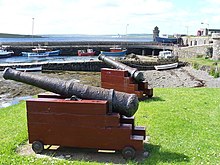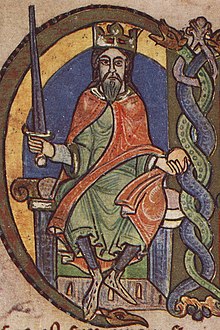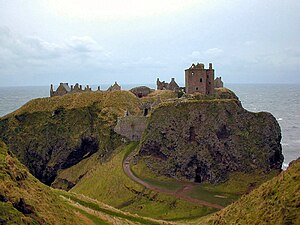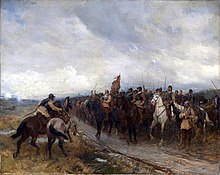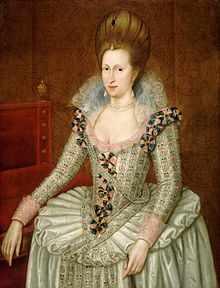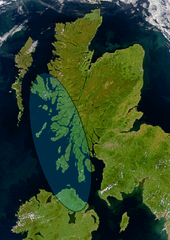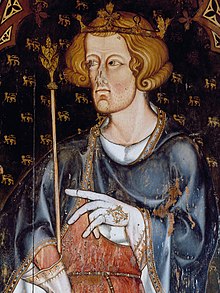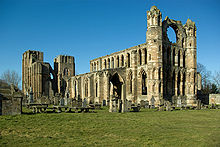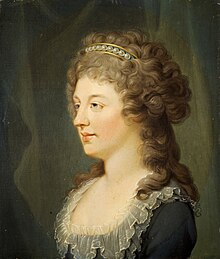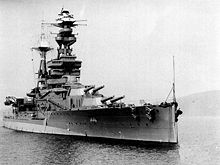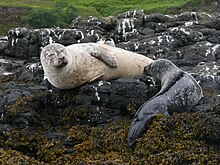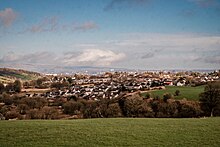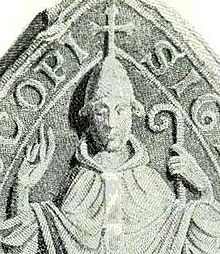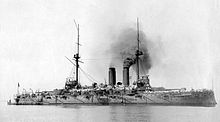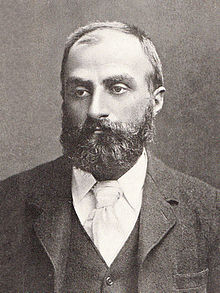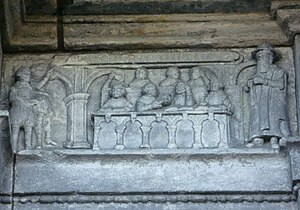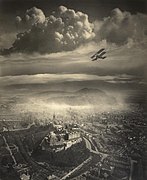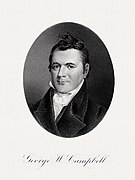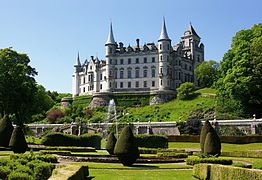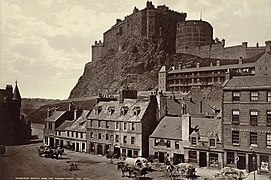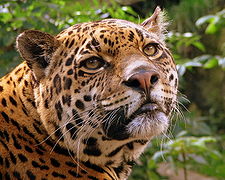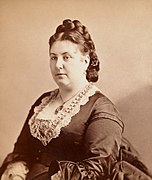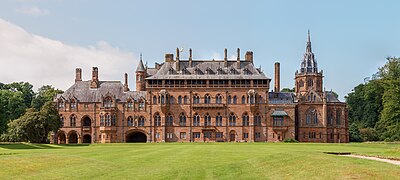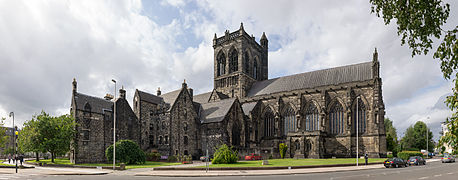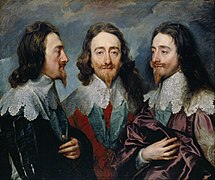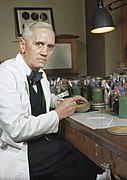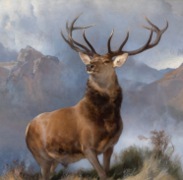Portal:Scotland/Featured
The Scotland Portal
View from An Teallach
| Main Page | Selected articles 1 | Selected articles 2 | Selected biographies | Selected quotes | Selected pictures | Featured Content | Categories & Topics |
Selection of featured articles
Selection of good articles

The treasure of Loch Arkaig, sometimes known as the Jacobite gold, was a large amount of specie provided by Spain to finance the Jacobite rising in Scotland in 1745, and rumoured still to be hidden at Loch Arkaig in Lochaber. (Full article...)
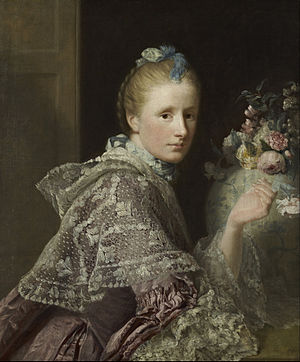
Scottish art in the eighteenth century is the body of visual art made in Scotland, by Scots, or about Scottish subjects, in the eighteenth century. This period saw development of professionalisation, with art academies were established in Edinburgh and Glasgow. Art was increasingly influenced by Neoclassicism, the Enlightenment and towards the end of the century by Romanticism, with Italy becoming a major centre of Scottish art.
The origins of the tradition of Scottish landscape painting are in the capriccios of Italian and Dutch landscapes undertaken by James Norie and his sons. These were further developed by Jacob More, who added a romantic sensibility to the Scottish landscape. Alexander Nasmyth helped found the Scottish landscape tradition and was highly influential as a teacher in Edinburgh on the subsequent generation of artists. John Knox linked it with the Romantic, historical myth-making novels of Walter Scott and was one of the first artists to take an interest in the urban landscape of Glasgow. Aberdeen-born John Alexander and William Mossman were the leading portrait artists of the first half of the century. Allan Ramsay emerged as the leading portrait painter of the mid-century and to the royal family, noted for his intimate representations. Towards the end of the century Henry Raeburn emerged as the leading portraitist and one of the first artists to spend the majority of their career in Scotland, extending his range to leading figures of the Enlightenment and most famous for his depiction of the Skating Minister. (Full article...)
Jessie Stephen, MBE (19 April 1893 – 12 June 1979) was a twentieth-century British suffragette, labour activist and local councillor. She grew up in Scotland and won a scholarship to train as a teacher. Family finances dictated otherwise, leading to her becoming a domestic worker at the age of 15. She became involved in national labour issues as a teenager, via organisations such as the Independent Labour Party and the Women's Social and Political Union. Stephen moved to London during World War I and in the 1920s she toured the United States and Canada, where she held meetings with the public including migrant English domestic workers.
Stephen was elected as a local councillor several times and stood as a candidate in general elections. After moving to Bristol in the 1940s she became the first woman president of Bristol Trades Council. She was appointed MBE in 1977 and her life is commemorated by a blue plaque in Bristol. (Full article...)
}
'"`UNIQ--templatestyles-00000050-QINU`"'
'"`UNIQ--references-00000051-QINU`"'
Source: (Full article...)
'"`UNIQ--templatestyles-00000050-QINU`"'
'"`UNIQ--references-00000051-QINU`"'
Source: (Full article...)

Music in early modern Scotland includes all forms of musical production in Scotland between the early sixteenth century and the mid-eighteenth century. In this period the court followed the European trend for instrumental accompaniment and playing. Scottish monarchs of the sixteenth century were patrons of religious and secular music, and some were accomplished musicians. In the sixteenth century the playing of a musical instrument and singing became an expected accomplishment of noble men and women. The departure of James VI to rule in London at the Union of Crowns in 1603, meant that the Chapel Royal, Stirling Castle largely fell into disrepair and the major source of patronage was removed from the country. Important composers of the early sixteenth century included Robert Carver and David Peebles. The Lutheranism of the early Reformation was sympathetic to the incorporation of Catholic musical traditions and vernacular songs into worship, exemplified by The Gude and Godlie Ballatis (1567). However, the Calvinism that came to dominate Scottish Protestantism led to the closure of song schools, disbanding of choirs, removal of organs and the destruction of music books and manuscripts. An emphasis was placed on the Psalms, resulting in the production of a series of Psalters and the creation of a tradition of unaccompanied singing.
Despite the attempts of the Kirk to limit the tradition of secular popular music, it continued. This period saw the adoption of the highland bagpipes and the fiddle. Ballads, some of which probably date from the Middle Ages, existed as part of a distinctive oral tradition. Allan Ramsey advocated the creation of a national musical tradition and collaborated with Italian composer and cellist Lorenzo Bocchi on the first Scottish opera the Gentle Shepherd. A musical culture developed around Edinburgh and a number of composers began to produce collections of Lowland and Highland tunes grafted on to Italian musical forms. By the middle of the eighteenth century a number of Italian musicians and composers were resident in Scotland and Scottish composers of national significance had begun to emerge. (Full article...)
USS Tucker (DD-374) was one of 18 Mahan-class destroyers built for the United States Navy and was commissioned in 1936. Tucker's main battery consisted of five dual-purpose 38 caliber 5-inch (127 mm) guns.
First assigned to the United States Battle Fleet in San Diego, California, Tucker operated along the West Coast and in the Hawaiian Islands. After participating in naval exercises in the Caribbean Sea, she returned to duty in Hawaii. She then went on a goodwill tour to New Zealand, returning to Hawaii and docking at Pearl Harbor. When the Japanese attacked Pearl Harbor on 7 December 1941, Tucker was undergoing an overhaul and was not attacked. Soon afterward, she began escorting convoys between the West Coast and Hawaii. Tucker was then tasked with escort duty to islands in the South Pacific. (Full article...)
Lieutenant-Colonel Lord Ninian Edward Crichton-Stuart (15 May 1883 – 2 October 1915) was a Scottish senior officer in the British Army and Member of Parliament. He was killed in action in the First World War. The second son of the Honourable Gwendolen Mary Anne Fitzalan-Howard and John Crichton-Stuart, 3rd Marquess of Bute, he entered the army in 1903 and served in the Queen's Own Cameron Highlanders and the Scots Guards as a lieutenant. After marrying he began a career in politics, serving first as a councillor on Fife County Council, Scotland. His family having close connections to the city of Cardiff in Wales, he fought and lost the January 1910 election there as a Liberal Unionist candidate. The resulting hung parliament led to a second election in December 1910, in which Crichton-Stuart won the seat.
In 1912, he took command of the 6th (Glamorgan) Battalion, The Welch Regiment. Upon the outbreak of the First World War, he volunteered his unit for service and joined the British Expeditionary Force on the Western Front. After eleven months on the front line, he was shot in the head and killed when leading his men in an attempt to repel a German counter-attack on 2 October 1915 during the Battle of Loos. He was one of 22 MPs that were killed during the conflict and the only serving MP from Wales to be killed. (Full article...)

The mountains and hills of the British Isles are categorised into various lists based on different combinations of elevation, prominence, and other criteria such as isolation. These lists are used for peak bagging, whereby hillwalkers attempt to reach all the summits on a given list, the oldest being the 282 Munros in Scotland, created in 1891.
A height above 2,000 ft, or more latterly 610 m, is considered necessary to be classified as a mountain – as opposed to a hill – in the British Isles. With the exception of Munros, all the lists require a prominence above 15 metres (49.21 ft). A prominence of between 15 and 30 metres (49.21 and 98.43 ft) (e.g. some Nuttalls and Vandeleur-Lynams), does not meet the International Climbing and Mountaineering Federation (UIAA) definition of an "independent peak", which is a threshold over 30 metres (98 ft). Most lists consider a prominence between 30 and 150 metres (98.43 and 492.1 ft) as a "top" (e.g. many Hewitts and Simms). Marilyns, meanwhile, have a prominence above 150 metres (492.1 ft), with no additional height threshold. They range from small 150-metre (490 ft) hills to the largest mountains. Prominences above 600 metres (1,969 ft), meet the P600 (the "Majors") classification, which is the UIAA international classification of a "major" mountain. (Full article...)
John Mylne (1611 – 24 December 1667), sometimes known as "John Mylne junior", or "the Younger", was a Scottish master mason and architect who served as Master Mason to the Crown of Scotland. Born in Perth, he was the son of John Mylne, also a master mason, and Isobel Wilson.
Practising as a stonemason, he also took on the role of architect, designing as well as building his projects. He was one of the last masters of Scottish Renaissance architecture, before new styles were imported by his successors. Alongside his professional career, he also served as a soldier and politician. He married three times but had no surviving children. (Full article...)
The Forth Bridge is a cantilever railway bridge across the Firth of Forth in the east of Scotland, 9 miles (14 kilometres) west of central Edinburgh. Completed in 1890, it is considered a symbol of Scotland (having been voted Scotland's greatest man-made wonder in 2016), and is a UNESCO World Heritage Site. It was designed by English engineers Sir John Fowler and Sir Benjamin Baker. It is sometimes referred to as the Forth Rail Bridge (to distinguish it from the adjacent Forth Road Bridge), although this is not its official name.
Construction of the bridge began in 1882 and it was opened on 4 March 1890 by the Duke of Rothesay, the future Edward VII. The bridge carries the Edinburgh–Aberdeen line across the Forth between the villages of South Queensferry and North Queensferry and has a total length of 8,094 feet (2,467 m). When it opened it had the longest single cantilever bridge span in the world, until 1919 when the Quebec Bridge in Canada was completed. It continues to be the world's second-longest single cantilever span, with a span of 1,709 feet (521 m). (Full article...)

Scottish religion in the eighteenth century includes all forms of religious organisation and belief in Scotland in the eighteenth century. This period saw the beginnings of a fragmentation of the Church of Scotland that had been created in the Reformation and established on a fully Presbyterian basis after the Glorious Revolution. These fractures were prompted by issues of government and patronage, but reflected a wider division between the Evangelicals and the Moderate Party. The legal right of lay patrons to present clergymen of their choice to local ecclesiastical livings led to minor schisms from the church. The first in 1733, known as the First Secession and headed by figures including Ebenezer Erskine, led to the creation of a series of secessionist churches. The second in 1761 led to the foundation of the independent Relief Church.
In 1743, the Cameronians established themselves as the Reformed Presbyterian Church, remaining largely separate from religious and political debate. Of independent churches from England that were established in the seventeenth century only the Quakers managed to endure in to the eighteenth century. Baptist chapels were re-established in the middle of the century and, although Scotland initially appeared fertile ground for Methodism, it failed to expand as quickly as elsewhere in the Great Britain and Ireland. A number of minor Scottish sects developed, such as the Bereans, Buchanites, Daleites and Glassites. (Full article...)
The Jocky Wilson Cup (officially the PartyPoker.com Jocky Wilson Cup for sponsorship) was a professional darts team tournament that took place at the Braehead Arena in Glasgow, Scotland, on 5 December 2009. This one-off tournament, which was named after Jocky Wilson, a two-time world darts champion, was the last of the eight non-ranking Professional Darts Corporation (PDC) events of the 2009 season. The tournament was contested by two nations of two players each. The winning nation was the first country to earn four points over a five-match series – four singles fixtures and one doubles game.
Phil Taylor and James Wade of England won the competition and whitewashed their opponents Gary Anderson and Robert Thornton of Scotland 6–0. Wade won the first game against Anderson 6–4; Taylor beat Thornton 6–0 in the second. Wade and Taylor defeated their opponents in the doubles match 6–2 for the overall victory and won their final two singles matches 6–4 over their Scottish opponents. (Full article...)
Phil Taylor and James Wade of England won the competition and whitewashed their opponents Gary Anderson and Robert Thornton of Scotland 6–0. Wade won the first game against Anderson 6–4; Taylor beat Thornton 6–0 in the second. Wade and Taylor defeated their opponents in the doubles match 6–2 for the overall victory and won their final two singles matches 6–4 over their Scottish opponents. (Full article...)
Lists of featured content
| This is a list of recognized content, updated weekly by JL-Bot (talk · contribs) (typically on Saturdays). There is no need to edit the list yourself. If an article is missing from the list, make sure it is tagged (e.g. {{WikiProject Scotland}}) or categorized correctly and wait for the next update. See WP:RECOG for configuration options. |
Featured articles
- Áedán mac Gabráin
- Anglo-Scottish war (1650–1652)
- Anne, Queen of Great Britain
- Anne of Denmark
- HMS Argus (I49)
- Japanese battleship Asahi
- Battle of Blenheim
- Blue men of the Minch
- William Bruce (architect)
- William Speirs Bruce
- Burke and Hare murders
- Burnt Candlemas
- Constantine II of Scotland
- Cullen House
- David I of Scotland
- Walter Donaldson (snooker player)
- Donnchadh, Earl of Carrick
- Alec Douglas-Home
- Battle of Dunbar (1650)
- Edward I of England
- Elgin Cathedral
- Queen Elizabeth The Queen Mother
- Fauna of Scotland
- From the Doctor to My Son Thomas
- Rachel Chiesley, Lady Grange
- Margaret Macpherson Grant
- Great North of Scotland Railway
- Bryan Gunn
- Battle of Halidon Hill
- HMS Hood
- Battle of Inverkeithing
- James II of England
- James VI and I
- Jocelin of Glasgow
- Kelpie
- John Knox
- Elizabeth Maitland, Duchess of Lauderdale
- Gregor MacGregor
- Mary, Queen of Scots
- Murray Maxwell
- William McGregor (football)
- Nebula Science Fiction
- Neilston
- Nuckelavee
- Order of the Thistle
- Pitfour estate
- HMS Ramillies (07)
- Renewable energy in Scotland
- Representative peer
- HMS Royal Oak (08)
- Scotland in the High Middle Ages
- Scotland national football team
- Scottish National Antarctic Expedition
- Shapinsay
- Isle of Skye
- Charlotte Stuart, Duchess of Albany
- HMS Vanguard (23)
- Second War of Scottish Independence
- John Wark
- Westminster Assembly
- John Michael Wright
Former featured articles
Good articles
- A82 road
- 2001 Scottish Masters
- 2002 Scottish Masters
- 2014 Scottish Labour leadership election
- 2022 Aberdeen City Council election
- 2022 Aberdeenshire Council election
- 2022 Angus Council election
- 2022 Argyll and Bute Council election
- 2022 Clackmannanshire Council election
- 2022 East Ayrshire Council election
- 2022 Glasgow City Council election
- 2022 North Ayrshire Council election
- 2022 South Ayrshire Council election
- 2022 South Lanarkshire Council election
- Aberdeen F.C.
- Aberdeen F.C.–Rangers F.C. rivalry
- Aberdour Castle
- William Adam (architect)
- Arbroath
- Architecture of Scotland
- Architecture in early modern Scotland
- Architecture in modern Scotland
- Architecture of Scotland in the Industrial Revolution
- Architecture of Scotland in the Middle Ages
- Architecture of Scotland in the Roman era
- Architecture of Scotland in the prehistoric era
- Isle of Arran
- Art in Medieval Scotland
- Art in early modern Scotland
- Art in modern Scotland
- James Balfour (died 1845)
- John Barrowman
- Battle of Barry
- Jim Baxter
- Ian Begg (architect)
- Ben Nevis
- Lewis Benson (boxer)
- Guy Berryman
- The Bhoys from Seville
- Billy Boys
- The Black Island
- HMS Bonaventure (31)
- Boobrie
- Eilley Bowers
- Bill Bowman (Scottish politician)
- British people
- Gordon Brown
- Brownie (folklore)
- Alexander Buchan (artist)
- Calendar (New Style) Act 1750
- James Campbell (British Army officer, died 1745)
- Camus Cross
- Thomas Carlyle
- Castles in Scotland
- Celtic F.C. in European football
- Celtic Park
- Erik Chisholm
- Church architecture in Scotland
- Winston Churchill
- Clan Maclachlan
- Clydesdale horse
- HMS Conqueror (1911)
- The Cookery Book of Lady Clark of Tillypronie
- Coxton Tower
- Craigiehall
- Lord Ninian Crichton-Stuart
- Cruachan Power Station
- Cullen Old Church
- 1966 European Cup Winners' Cup final
- The Daily Mash
- Dandie Dinmont Terrier
- Ruth Davidson
- Demographic history of Scotland
- Paul Dickov
- Mary Docherty
- Donkey Punch (novel)
- Doune Castle
- Dowhill Castle
- Dubh Artach
- Andrew Dudley
- Duncraig Castle
- Dunnottar Castle
- Dunrobin Castle
- Dunstaffnage Castle
- East Kirkton Quarry
- East Stirlingshire F.C.
- Easter Road
- Economy of Scotland in the Middle Ages
- Economy of Scotland in the early modern period
- Edinburgh Castle
- University of Edinburgh
- Edinburgh Zoo
- Education in Medieval Scotland
- Education in early modern Scotland
- Edzell Castle
- Eenoolooapik
- Eidyn
- Elcho Castle
- English invasion of Scotland (1400)
- Eriskay Pony
- Estate houses in Scotland
- 1884 FA Cup final
- Edward G. Faile
- Fairy Flag
- Falkirk Wheel
- Family in early modern Scotland
- James Ferguson, Lord Pitfour
- James Ferguson (Scottish politician)
- Finnieston Crane
- Flag of Scotland
- Flora of Scotland
- Sir Ewan Forbes, 11th Baronet
- Forglen House
- Forth Bridge
- Forth Valley Royal Hospital
- Dario Franchitti
- Château Gaillard
- Ryan Gauld
- Geography of Scotland in the Middle Ages
- Geography of Scotland in the early modern era
- Geology of Scotland
- Giffnock
- Gilli (Hebridean earl)
- Glass Swords
- The Glenlivet distillery
- Glenrothes
- Glorious Revolution in Scotland
- Government in early modern Scotland
- Government in medieval Scotland
- Isobel Gowdie
- Grey Gowrie
- John Gregorson Campbell
- Hampden Park
- Hibernian F.C.
- Highland cattle
- Highlands and Islands Alliance
- Lists of mountains and hills in the British Isles
- Hillforts in Scotland
- History of Scotland
- History of agriculture in Scotland
- Mary Hogarth
- Housing in Scotland
- How the Scots Invented the Modern World
- Leslie Hunter
- HMS Hurst Castle
- Ibrox Stadium
- 1902 Ibrox disaster
- Illieston House
- Inchdrewer Castle
- Inner Hebrides
- James Innes (British Army officer, died 1759)
- Charles Irving (surgeon)
- Islands of the Clyde
- Islay
- James I of Scotland
- Bert Jansch
- Jarlshof
- Jocky Wilson Cup
- Kelvin Scottish
- Battle of Kinghorn
- Kirkandrews, Dumfries and Galloway
- Kirkcaldy
- Kirkcudbright Tolbooth
- Labour Party of Scotland
- Johann Lamont
- Landscape painting in Scotland
- Billy Liddell
- Literature in early modern Scotland
- Kim Little
- Loch Arkaig treasure
- Loch Henry
- Lochleven Castle
- RAF Lossiemouth
- Murder of Alesha MacPhail
- Clan MacAulay
- Doris Mackinnon
- Sorley MacLean
- Richard Madden
- SS Manasoo
- James Clerk Maxwell
- Maybole Castle
- James McAvoy
- Stuart McCall
- Angus McDonald (Virginia militiaman)
- McEwan's
- Ewan McGregor
- John George McTavish
- Johnny McNichol
- Meantime (book)
- Mingulay
- Colin Mitchell
- Michelle Mone, Baroness Mone
- Monifieth
- William Montgomerie
- James Murray, Lord Philiphaugh
- Music in early modern Scotland
- John Mylne (died 1667)
- The National (Scotland)
- John Ogilby
- One Kiss
- Orkney
- Outer Hebrides
- Paisley witches
- Papa Stour
- Partick Thistle F.C.
- Portrait painting in Scotland
- Potion (song)
- Prehistoric art in Scotland
- Raasay
- RAF Machrihanish
- Ragnall ua Ímair
- Alex Raisbeck
- Rangers F.C. signing policy
- Renaissance in Scotland
- Richard Rennison
- Rockstar Dundee
- Romanticism in Scotland
- Andrew Ross (rugby union, born 1879)
- Royal Banner of Scotland
- Rusco Tower
- St Margaret's Church, Aberlour
- St Peter's Roman Catholic Church, Buckie
- St Rufus Church
- Scandinavian Scotland
- Schiehallion experiment
- Scotland during the Roman Empire
- Scotland in the Middle Ages
- Scotland in the early modern period
- Scotland in the late Middle Ages
- Scotland in the modern era
- Scotland national football team manager
- Scotland under the Commonwealth
- Scottish art
- 1999 Scottish Challenge Cup final
- 2002 Scottish Challenge Cup final
- 2007 Scottish Challenge Cup final
- Scottish Challenge Cup
- 1873–74 Scottish Cup
- 2012 Scottish Cup final
- 2019 Scottish Open (snooker)
- 1971 Scottish soldiers' killings
- Scottish Terrier
- Scottish art in the eighteenth century
- Scottish art in the nineteenth century
- Scottish religion in the eighteenth century
- Scottish religion in the seventeenth century
- Scottish society in the Middle Ages
- Scottish society in the early modern era
- Scuttling of the German fleet at Scapa Flow
- Sea Mither
- Bill Shankly
- Shetland
- Shieling
- Sieges of Berwick (1355 and 1356)
- Ian Smith (rugby union, born 1903)
- Jimmy Speirs
- Staffa
- Jessie Stephen
- Alexander Stoddart
- Stoor worm
- John Struthers (anatomist)
- Charles Edward Stuart
- Sundrum Castle
- Philipp Tanzer
- Tay Whale
- D'Arcy Wentworth Thompson
- Thurso
- Tibbers Castle
- Titan Clydebank
- Torf-Einarr
- Tradeston Flour Mills explosion
- Trident (UK nuclear programme)
- USS Tucker (DD-374)
- German submarine U-27 (1936)
- Urquhart Castle
- James Walker (Australian politician)
- James Walker (Royal Navy officer)
- William Middleton Wallace
- Warfare in Medieval Scotland
- Warfare in early modern Scotland
- Water bull
- West Highland White Terrier
- Robert White (Virginia physician)
- Krysty Wilson-Cairns
- Witch trials in early modern Scotland
- Andrew Wodrow
- Women in early modern Scotland
Former good articles
- Alexander Bain (inventor)
- Billy Bremner
- William Buchanan (locomotive designer)
- Canadian Gaelic
- Andrew Carnegie
- Carnoustie
- Coatbridge
- Catherine Cranston
- Arthur Conan Doyle
- Dundee United F.C.
- Steve Evans (footballer, born 1962)
- Evanton
- Forth Road Bridge
- Glasgow
- Glasgow, Paisley, Kilmarnock and Ayr Railway
- University of Glasgow
- Frank Hadden
- Halloween
- David Hume
- Jordanhill railway station
- Deborah Kerr
- Lothian Buses
- Gillian McKeith
- Andy Murray
- Picts
- Scotland
- Scots language
- Still Game
- Alec Sutherland
- Tay Bridge
- Treasure Island
- William Morrison (chemist)
Featured lists
- List of islands of Scotland
- List of Celtic F.C. managers
- List of Scottish Football League clubs
- List of Scotland international footballers
- List of Scotland ODI cricketers
- List of Scotland national football team hat-tricks
- List of Scottish football champions
- List of Scottish football clubs in the FA Cup
- PFA Scotland Players' Player of the Year
- SFWA Footballer of the Year
- Scotland national football team results (1872–1914)
- Timeline of prehistoric Scotland
- Timeline of Scottish football
Featured pictures
-
13-06-07 RaR Biffy Clyro Simon Neil 02
-
Aerial View of Edinburgh, by Alfred Buckham, from about 1920
-
Arthur-James-Balfour-1st-Earl-of-Balfour
-
CAMPBELL, George W-Treasury (BEP engraved portrait)
-
Charles Robert Leslie - Sir Walter Scott - Ravenswood and Lucy at the Mermaiden's Well - Bride of Lammermoor
-
Common seal (Phoca vitulina) 2
-
Dalziel Brothers - Sir Walter Scott - The Talisman - Sir Kenneth before the King
-
Daniel Craig McCallum by The Brady National Photographic Art Gallery
-
David Livingstone by Thomas Annan
-
Dunrobin Castle -Sutherland -Scotland-26May2008 (2)
-
Edinburgh Castle from Grass Market
-
Eilean Donan Castle, Scotland - Jan 2011
-
Falkirk Wheel Timelapse, Scotland - Diliff
-
FalkirkWheelSide 2004 SeanMcClean
-
Gavin Hamilton - Coriolanus Act V, Scene III edit2
-
Jaguar at Edinburgh Zoo
-
Jeremiah Gurney - Photograph of Euphrosyne Parepa-Rosa
-
Loch Torridon, Scotland
-
Mount Stuart House 2018-08-25
-
N. M. Price - Sir Walter Scott - Guy Mannering - At the Kaim of Derncleugh
-
NEWScotland-2016-Aerial-Blackness Castle 01
-
Nils Olav inspects the Kings Guard of Norway after being bestowed with a knighthood at Edinburgh Zoo in Scotland
-
Paisley Abbey Interior East
-
Paisley Abbey from the south east
-
Prince James Francis Edward Stuart by Alexis Simon Belle
-
Robert William Thomson - Illustrated London News March 29 1873
-
Scotland-2016-West Lothian-Hopetoun House 02
-
Sgùrr nan Gillean from Sligachan, Isle of Skye, Scotland - Diliff
-
Sir Anthony Van Dyck - Charles I (1600-49) - Google Art Project
-
St Matthew's Church - Paisley - Interior - 5
-
Synthetic Production of Penicillin TR1468
-
The Air Ministry, 1939-1945. CH10270 – Edit 1
-
The Monarch of the Glen, Edwin Landseer, 1851
-
The Skating Minister
-
Thomas Keene in Macbeth 1884 Wikipedia crop
-
View of loch lomond
-
Wemyss Bay railway station concourse 2018-08-25 2
-
William John Macquorn Rankine by Thomas Annan
Get involved
For editor resources and to collaborate with other editors on improving Wikipedia's Scotland-related articles, see WikiProject Scotland.
To get involved in helping to improve Wikipedia's Scotland related content, please consider doing some of the following tasks or joining one or more of the associated Wikiprojects:
- Visit the Scottish Wikipedians' notice board and help to write new Scotland-related articles, and expand and improve existing ones.
- Visit Wikipedia:WikiProject Scotland/Assessment, and help out by assessing unrated Scottish articles.
- Add the Project Banner to Scottish articles around Wikipedia.
- Participate in WikiProject Scotland's Peer Review, including responding to PR requests and nominating Scottish articles.
- Help nominate and select new content for the Scotland portal.
Do you have a question about The Scotland Portal that you can't find the answer to?
Post a question on the Talk Page or consider asking it at the Wikipedia reference desk.
Related portals
Wikipedia in other relevant languages
Associated Wikimedia
The following Wikimedia Foundation sister projects provide more on this subject:
-
Commons
Free media repository -
Wikibooks
Free textbooks and manuals -
Wikidata
Free knowledge base -
Wikinews
Free-content news -
Wikiquote
Collection of quotations -
Wikisource
Free-content library -
Wikispecies
Directory of species -
Wikiversity
Free learning tools -
Wikivoyage
Free travel guide -
Wiktionary
Dictionary and thesaurus





